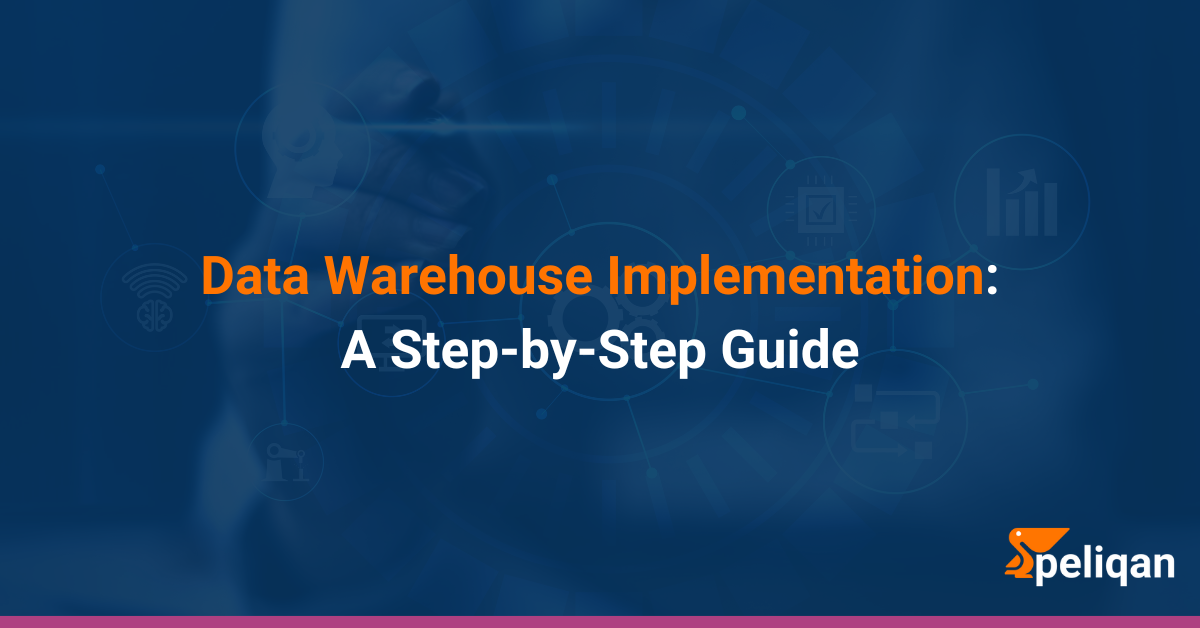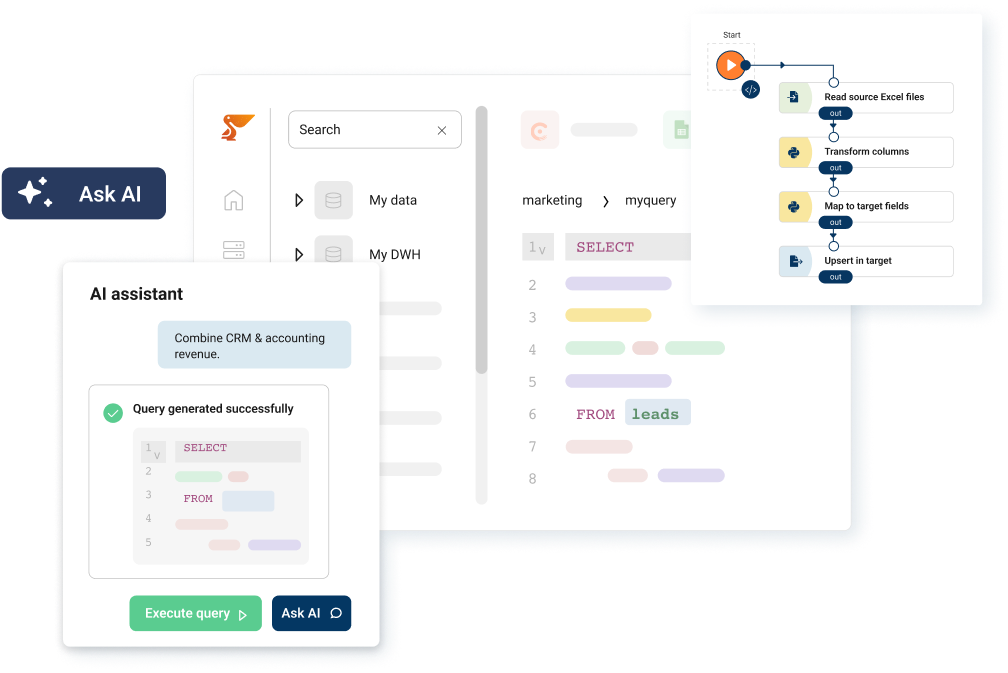In today’s data-driven landscape, businesses are perpetually inundated with vast amounts of information generated from various channels. This exponential growth in data brings forth significant challenges, often termed as pain points, that can hinder effective decision-making and operational efficiency.
Organizations frequently grapple with issues such as data silos, inconsistent data quality, and inefficient reporting processes. These obstacles not only impede the ability to glean actionable insights but also result in missed opportunities. Implementing a robust data warehouse is, therefore, not merely a strategic initiative; it is a necessity for organizations aiming to leverage their data assets comprehensively.
By consolidating disparate data sources into a unified repository, businesses can achieve improved data integrity, streamlined analytics, and, ultimately, a competitive edge in their respective markets.
To navigate the complexities of data warehouse implementation effectively, it is imperative for organizations to consider several critical factors that can significantly influence the success of the project. Addressing these key considerations from the outset will not only facilitate smoother execution but also enhance the overall value derived from the data warehouse.
Steps in Data Warehouse Implementation
Data warehousing offers a multitude of benefits for businesses. It allows for the seamless integration of data across various departments, providing a holistic view of organizational data. This centralization facilitates improved data analysis, leading to enhanced decision-making capabilities. With a data warehouse in place, businesses can efficiently manage large volumes of data, ensuring data accuracy, consistency, and accessibility.
Implementing a data warehouse involves a systematic approach to ensure that the project meets business objectives and technical requirements. The following 10 steps outline the data warehouse implementation process:
- Requirement Gathering and Analysis
- Data Modeling
- Data Integration and ETL Process
- Data Cleansing and Validation
- Building Data Marts
- Data Security and Governance
- Testing and Quality Assurance
- Deployment and Maintenance
- User Training and Adoption
- Ongoing Management and Optimization
Now, Let’s dive deeper into each data warehouse implementation steps.
1. Requirement Gathering and Analysis
Identify Business Needs: Clearly define the business objectives and questions the data warehouse should answer. Align the data warehouse goals with overall business strategy and KPIs.
Define Users and Roles: Determine who will use the data warehouse services and what their specific needs are. Create user personas and map out their data access and analysis requirements.
Data Identification: Identify all relevant data sources, both internal and external. Catalog existing databases, applications, and third-party data providers.
Data Volume and Quality Assessment: Evaluate the volume, format, and quality of the identified data. Estimate data growth rates and assess the current state of data quality across sources.
2. Data Modeling
Conceptual Modeling: Create a high-level representation of the data warehouse structure, focusing on entities, attributes, and relationships. Develop entity-relationship diagrams (ERDs) to visualize the overall data structure.
Logical Modeling: Define the data warehouse schema in detail, specifying tables, columns, data types, and primary/foreign keys. Choose between star, snowflake, or galaxy schema designs based on analytical requirements.
Physical Modeling: Optimize the data warehouse design for performance and storage efficiency, considering indexing, partitioning, and clustering. Implement denormalization techniques where appropriate to improve query performance.
3. Data Integration and ETL Process
Data Extraction: Extract data from various source systems using appropriate methods (e.g., database queries, APIs, file transfers). Implement change data capture (CDC) techniques for efficient incremental data loads.
Data Transformation: Cleanse, transform, and standardize data to ensure consistency and accuracy. Handle missing values, outliers, and data inconsistencies through custom transformation logic.
Data Loading: Load the transformed data into the data warehouse in a structured format, optimizing for performance and efficiency. Implement parallel loading and bulk insert techniques for large data volumes.
4. Data Cleansing and Validation
Data Profiling: Analyze data quality to identify inconsistencies, errors, and missing values. Use statistical methods and visualization techniques to understand data distributions and patterns.
Data Cleansing: Correct data errors, handle missing values, and standardize data formats. Implement automated data cleansing rules and workflows for ongoing quality maintenance.
Data Validation: Implement data validation rules to ensure data integrity and consistency. Set up automated checks for data accuracy, completeness, and conformity to business rules.
5. Building Data Marts
Identify Business Users: Determine the specific needs of different user groups. Conduct workshops and interviews to gather detailed requirements for each business function.
Data Selection: Select relevant data from the data warehouse for specific business functions. Create views and aggregations tailored to each user group’s analytical needs.
Data Mart Design: Create a separate data mart for each user group, optimizing the data structure for their specific needs. Implement appropriate indexing and materialized views to enhance query performance.
6. Data Security and Governance
Access Control: Implement security measures to protect sensitive data, including user authentication, authorization, and encryption. Set up role-based access control (RBAC) and column-level security where necessary.
Data Governance: Establish policies and procedures for data quality, metadata management, and data retention. Implement data lineage tracking and impact analysis capabilities.
7. Testing and Quality Assurance
Unit Testing: Test individual ETL components to ensure correct data transformation. Develop and maintain a comprehensive suite of unit tests for all data processing logic.
Integration Testing: Test the entire ETL process to verify data flow and accuracy. Simulate full data loads and incremental updates to ensure end-to-end process integrity.
Performance Testing: Evaluate the data warehouse performance under different load conditions. Conduct stress tests and identify bottlenecks in query execution and data loading processes.
User Acceptance Testing (UAT): Validate the data warehouse meets user requirements. Engage key stakeholders in hands-on testing of reports, dashboards, and analytical capabilities.
8. Deployment and Maintenance
Data Warehouse Deployment: Deploy the data warehouse to the production environment. Implement a robust change management process for future updates and enhancements.
Monitoring and Performance Tuning: Continuously monitor the data warehouse performance and identify optimization opportunities. Set up automated alerts for performance issues and query execution anomalies.
Data Refresh: Schedule regular data updates to maintain data freshness. Implement efficient incremental load processes to minimize impact on system performance.
Backup and Recovery: Implement backup and recovery procedures to protect data. Conduct regular disaster recovery drills to ensure business continuity.
9. User Training and Adoption
User Training: Provide training to end-users on how to access, query, and analyze data from the data warehouse. Develop user guides, video tutorials, and hands-on workshops for different user roles.
Change Management: Communicate the benefits of the data warehouse and address user concerns. Identify and nurture data warehouse champions within each business unit to drive adoption.
10. Ongoing Management and Optimization
Data Quality Monitoring: Continuously monitor data quality to identify and address issues. Implement data quality scorecards and trend analysis to track improvements over time.
Performance Optimization: Regularly assess and optimize data warehouse performance. Analyze query patterns and implement performance tuning measures such as query rewrites and index optimizations.
Metadata Management: Maintain accurate and up-to-date metadata. Implement a centralized metadata repository and ensure consistent metadata across all data assets.
Data Governance: Enforce data governance policies and standards. Conduct regular audits and reviews to ensure compliance with data governance policies.
By systematically following these 10 data warehouse implementation steps, organizations can establish a robust data warehouse that not only meets their immediate analytic needs but also supports future growth and adaptability in the rapidly evolving data landscape.
Common Challenges in Implementing a Data Warehouse
While implementing a data warehouse can yield extensive benefits, organizations often face significant challenges throughout the process. Understanding these potential pitfalls is crucial for devising effective strategies to mitigate them. The following table summarizes common challenges and their implications:
| Challenge | Root Causes | Impact | Mitigation Strategies |
|---|---|---|---|
| Data Quality Issues | – Inconsistent data formats – Duplicate records – Missing values – Outdated information |
– Inaccurate analytics – Flawed decision-making |
– Implement robust data cleansing – Establish data quality standards – Continuous quality monitoring |
| Scalability and Performance | – Rapid data growth – Complex queries – Inadequate hardware |
– Slow query response times – Delayed reporting – User frustration |
– Design for scalability from the start – Implement data partitioning – Consider cloud-based solutions |
| Integration of Disparate Data Sources | – Different data formats – Incompatible systems – Varying update frequencies |
– Incomplete data – Inaccurate insights |
– Develop comprehensive integration strategy – Use ETL tools supporting multiple sources |
| Defining Clear Business Requirements | – Poor IT-business communication – Evolving business needs – Insufficient stakeholder engagement |
– Low adoption rates – Misaligned warehouse capabilities |
– Thorough requirement gathering – Involve key stakeholders – Establish clear success metrics |
| Data Governance and Security | – Lack of clear data ownership – Inconsistent data policies – Evolving privacy regulations |
– Data breaches – Compliance issues – Poor data lineage tracking |
– Establish data governance framework – Implement role-based access controls – Stay informed on data protection laws |
| Managing Schema Changes | – Changing business processes – New data sources – Evolving analytical needs |
– Disruption to existing reports – Potential data inconsistencies |
– Design flexible schema – Implement version control – Thorough testing processes |
| User Adoption and Training | – Resistance to change – Lack of system understanding – Insufficient training |
– Low utilization – Reduced ROI |
– Develop change management strategy – Provide thorough training and support – Showcase early wins |
| Balancing Real-time and Batch Processing | – Diverse analytical needs – Limitations of traditional ETL |
– Inability to provide up-to-date data | – Consider hybrid processing approach – Implement change data capture (CDC) |
| Cost Management | – Underestimating infrastructure needs – Complex licensing models – Ongoing maintenance costs |
– Budget overruns – Difficulty justifying ROI |
– Careful planning and budgeting – Consider cloud-based solutions – Regular resource optimization |
| Keeping Up with Technological Advancements | – Fast-paced tech changes – New data types and sources |
– Reduced competitiveness – Inability to leverage new tech |
– Design flexible architecture – Regular tech stack assessment – Consider modular approaches |
By proactively addressing these challenges, organizations can better position themselves to successfully implement and derive maximum value from their data warehouse initiatives.
Data Warehouse Implementation Best Practices
To maximize the effectiveness of a data warehouse implementation, it is essential to adhere to several best practices that facilitate streamlined processes and robust outcomes. These practices are grounded in a holistic understanding of data architecture, user needs, and technological advancements.
- Establish Clear Objectives: Define specific, measurable goals for the data warehouse aligned with organizational strategies. This clarity will ensure that all stakeholders understand the purpose and expected outcomes, guiding development and decision-making processes.
- Prioritize Data Quality Management: Implement stringent data quality control measures from the outset. Regularly assess and cleanse data to maintain accuracy, completeness, and reliability, which are critical for trustworthy analytics.
- Incorporate Scalability by Design: Anticipate future data growth by designing a scalable architecture. This approach includes selecting flexible storage solutions and adaptable processing frameworks that can accommodate evolving data needs without significant overhauls.
- Utilize Advanced Analytics Tools: Leverage machine learning development alongside advanced analytics tools and technologies to empower users in extracting valuable insights from your data warehouse. By integrating machine learning with predictive analytics, you elevate the strategic value derived from your data, transforming raw information into forward-looking, actionable intelligence.
- Foster Interdepartmental Collaboration: Encourage collaboration between IT and business units throughout the project lifecycle. This involvement ensures the system meets user requirements while fostering a culture of shared ownership over data assets.
- Implement Robust Security Measures: Safeguard sensitive data through comprehensive security protocols, including encryption, user authentication, and access controls. Ensuring that data security is a priority builds user trust and adheres to compliance standards.
- Continuous Learning and Adaptation: Promote a culture of continuous improvement by regularly reviewing the data warehouse’s performance and soliciting user feedback. Adapting to new insights and trends can enhance system efficiency and ensure that it evolves with organizational demands.
By integrating these best practices into the implementation strategy, organizations can cultivate a resilient and effective data warehouse that not only meets current analytical requirements but also evolves in tandem with future business needs.
Conclusion
In conclusion, the successful implementation of a data warehouse hinges on a thorough understanding of the various challenges and adherence to best practices. By focusing on clear objectives, ensuring high data quality, and fostering collaboration across departments, organizations can create a robust infrastructure that supports their analytical needs.
Furthermore, the emphasis on scalability and security will safeguard the organization’s investment and promote long-term success. As organizations navigate this complex landscape, partnering with a specialist like Peliqan can provide invaluable support.
Peliqan offers tailored solutions that address data warehousing challenges head-on, utilizing cutting-edge technologies and expertise to ensure optimal performance, enhanced data governance, and seamless integration of disparate data sources. With Peliqan’s assistance, businesses can not only implement an efficient data warehouse but also fully leverage their data to drive informed decision-making and strategic growth.









